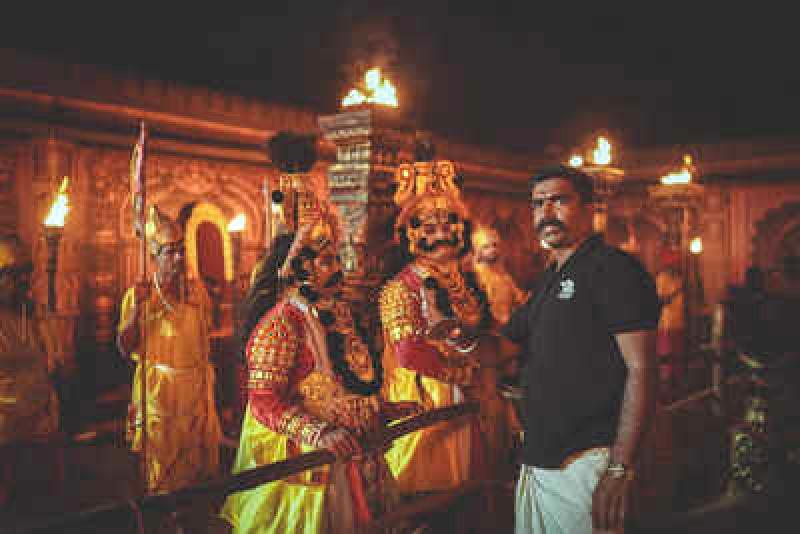
Music composer-director Ravi Basrur grew up in a town where Yakshagana was the primary source of entertainment. As time passed, he transitioned to radio, TV, and eventually ventured into the world of films. Witnessing Yakshagana artistes being underutilized in mainstream media sparked Ravi's desire to introduce this traditional folk dance form to a wider audience. This led to the inception of Veera Chandrahasa, a unique project that aims to showcase Yakshagana on a larger platform.
Ravi's upcoming directorial endeavor, Veera Chandrahasa, is a blend of historical storytelling and Yakshagana performance, shot entirely in the traditional Yakshagana format. To ensure the energy of the artistes remained high throughout the filming process, meticulous planning and multiple camera setups were employed. Ravi delved into extensive research and collaborated with Yakshagana veterans to bring the inspiring tale of Veera Chandrahasa to life.
Unfazed by the potential outcome of his projects, Ravi is driven by a passion to share his cultural heritage with a wider audience. His previous film, Girmit, showcased a novel concept by featuring only child actors and was well-received by audiences. Ravi's commitment to experimenting and preserving cultural traditions shines through in his creative pursuits.Puneeth Rajkumar, Yash, and Radhika Pandit collaborate in the upcoming film with Veera Chandrahasa, embarking on a new cinematic journey. The director shares, "I had envisioned this project 12 years ago, but due to financial constraints, it was put on hold. It was only after gaining success in the industry that I decided to invest in such creative ventures. My goal is to create films that not only entertain but also highlight Karnataka's rich cultural heritage. Yakshagana, a traditional art form, holds immense historical significance and comprises rare linguistic elements. Through my work, I aim to shed light on the grandeur of this art to a wider audience."
The director expresses his desire to create films free from the pressures of commercial success. He emphasizes the importance of taking creative risks without being hindered by fears of failure. By prioritizing artistic expression over external validation, he seeks to connect with audiences on a deeper level.
The filmmaking process involved the coordination of a large ensemble cast, with 500 artists featured in the opening scene. The dedication and hard work of the performers were evident as they immersed themselves in rehearsals and elaborate costume preparation. The meticulous attention to detail, including individualized makeup artists for each Yakshagana performer, ensured a seamless visual continuity throughout the production. The filming schedule, starting in the evening and concluding before dawn, relied on the use of traditional oil torches for lighting, resulting in vibrant and authentic visuals captured on screen.











